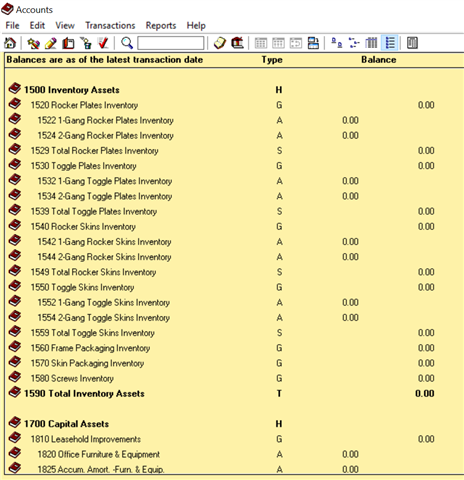Hi,
I am completely new to Sage and bookkeeping and am receiving help setting up my inventory list in my Chart of Accounts. Could anyone help me understand the difference between the Group Account vs the Sub-group account?
1520 is listed as Rocker Plates Inventory, but no actual inventory is intended to be assigned to this account. The account 1520 was supposed to be more of a title for the group of sub-accounts. Instead, I am planning on assigning the inventory to the sub-groups 1522 (1-Gang Rocker Plates Inventory) and 1524 (2-Gang Rocker Plates Inventory).
Do I need account 1520? Should I re-number?

Thank you very much for your help.

